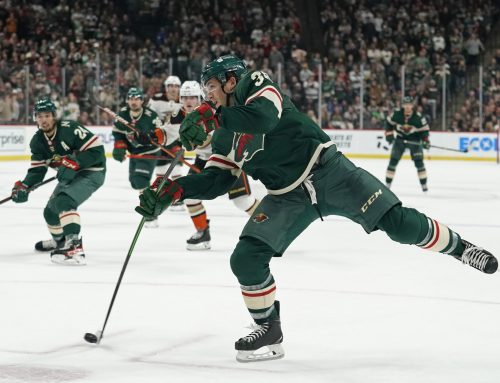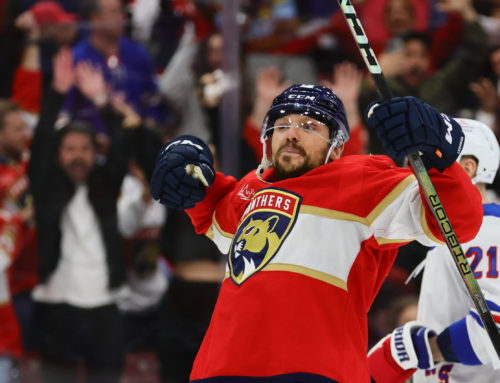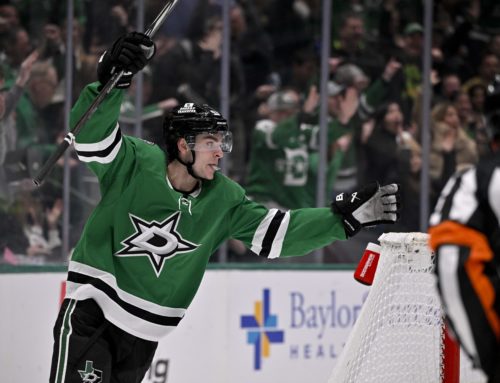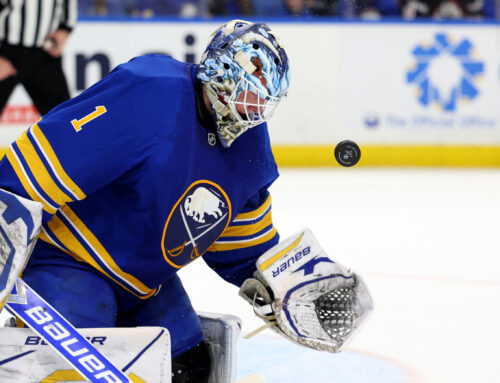The anticipated trade of Alex DeBrincat finally materialized over the weekend as he was sent from Ottawa to Detroit in exchange for a first- and a fourth-round pick, Dominik Kubalik, and prospect defenceman Donovan Sobrango. The Wings turned around to extend DeBrincat for four years with an AAV under $8M. It lines up for DeBrincat to get his big payday down the road.
You can read Ian Gooding's take on the trade.
I will have more in my Ramblings on Thursday, but this seems like a good deal for the Red Wings. They get the true game-breaking winger they haven't had since… well it's been a while. DeBrincat goes to a team where he's the unquestioned top scoring winger and will get the role/ice time commensurate to that. Seems like a good deal for both team and player.
*
Noah Cates signed a two-year deal with the Flyers
Though he hasn't shown high-end offensive skill yet, he is showing good work on the defensive side of things, and that'll please coach John Tortorella. Some healthy Flyers forwards returning might muddle his role but Cates seemed to play his way up the lineup and might just force the coach's hand. There could be a sneaky 15-goal, 40-point, 100-hit fantasy forward here.
Cam York re-upped for two years as well, carrying an AAV of $1.6M. I will say this about York: I am still as high on his upside now as I was two years ago, and he made it a full season under John Tortorella while earning more ice time at the end. If Torts is comfortable enough playing him 21-22 minutes a night, he’s still a threat for top offensive minutes.
*
Filip Zadina signed a one-year deal with the San Jose Sharks. I may not be a smart man, but I do think that going to a lottery team to salvage your career is an interesting decision. Best of luck to him. He should get meaningful ice time, at any rate. You can read Dobber's take on this here.
*
It is time to start looking toward the 2023-24 season. Free agency is an ongoing process but all of the big names – that term should be graded on a curve for the 2023 FA class – are gone. We will constantly refer to prior seasons as we look ahead because that's how projections and predictions work, but we need to start shaping the upcoming fantasy campaign both in our heads and on (virtual) paper.
Anyone that pays attention to the NHL – fantasy hockey fans would certainly qualify – knows the way the game is played seems to change on a near-annual basis now. That means changes to stats we need to accumulate. So, let's look at changes in stats over the years.
The first caveat is that things will vary wildly from league to league. What is necessary for the top assist total in a 10-team fantasy league that has 9 starting skaters will not be what's necessary for the top assist total in a 16-team fantasy league that has 12 starting skaters.
The second caveat is we're going to be looking at things on a per-game basis, because fantasy leagues have games-played limits and not minutes-played limits. Efficiency matters, and that is factored into projections, but it's important to know what happens in an average game so we know what we need in fantasy.
Data will be pulled largely from Natural Stat Trick or Frozen Tools unless otherwise indicated. Once we review changes in stats, we are going to focus on players that contribute across the board.
For a reference, here are the per-season totals from each of the last five seasons, and how that breaks down on a per-game basis:

Let's get to what some of this means.
Goals
The 2022-23 season saw five players reach the 50-goal plateau. There were four the year prior and just two back in 2018-19. That 18-19 season also saw Alex Ovechkin top the league with 51 goals, a mark surpassed by four players in 22-23.
For all the talk of the rise in scoring, though, it worked out to just a 1.3% rise, or a total of 97 goals. I think we should look at 22-23 just more-or-less confirming that we are in a higher-scoring era than five years ago, rather than a significant jump in scoring.
Assists
Assuming that assists rose at a rate similar to goals would be a reasonable assumption to make, but it's not quite correct. Assists did go up in 2022-23 compared to the season prior, but only by 0.79%. Overall, there were 97 more goals in the league but just 107 more assists. The number of assists per goal actually went down year-over-year from 1.69 to 1.68. So, yes, there are more assists per game, but not as many as we might think.
Maybe that is why there were actually same number of players that reached the 50-assist mark in 2022-23 (31) than the year prior. There were more players that reached 60 assists than in 2021-22, so the super-high-end guys benefitted more from the rise in scoring than the middle class. It bears out when we see that virtually the same number of players finished between 25-41 assists in 2021-22 (121) as this past season (122).
Points
Of course, points rose at a rate commensurate to goals and assists. Like the assists, though, it's the distribution that matters:
- 11 players reached the 100-point plateau in 2022-23, compared to 8 players the year prior.
- 19 players reached the 90-point plateau in 2022-23, compared to 16 players the year prior.
- 78 players finished between 50-70 points in 2022-23, compared to 84 players the year prior.
Yes, there were more super-high-end production seasons, but there were fewer middle-of-the-road production seasons. The top guys are getting more productive, and the additional power play time/power play scoring is helping things a lot: 30 players reached 30 power-play points in 2022-23, compared to just 20 in 2021-22. The inflated point totals for elite players are thanks to the man advantage.
Shots
Despite the rise in goals, shots per game went down. The league and its teams have started focusing more and more on the quality of the shot rather than pure quantity. Pre-shot movement and in-zone passing are more important than they've ever been.
The funny part is this: despite a drop in shots per game, there were way more players that reached the 300-shot plateau in 22-23 (10) than the year prior (6). Remember there were still players going into COVID protocols in 2021-22, so none of the players that reached 300 shots played all 82 games, and only 1 of 6 reached 80 games. Conversely, of the 10 players that reached 300 shots in 2022-23, half of them played all 82 games. Having more high-end shot totals was partly a function of having more high-end players skate a full season.
Part of the shot drop, and focus on quality, was a move away from defencemen bombing from the point. Even in a 2021-22 season that saw a lot of players miss games for protocol reasons, there were 13 defencemen that reached 200 shots; this past season had 11 such defencemen. Volume shooters from the blue line may become more rare as teams move away from relying on point shots, putting more value on guys like Brent Burns and Noah Dobson.
Penalty Minutes
There was a sizable jump in penalty minutes, and power plays, but there was also a small rise in misconducts. Not all of it is simply calling more minors, though that is a sizable chunk of it.
What's more notable is how the PIMs are distributed through the league. The 2021-22 season saw 21 players reach at least 90 PIMs, but just 16 this past campaign. Despite a rise in PIMs, the number of super-high-end guys fell substantially. Conversely, there were way, way more players that finished between 30-50 PIMs this past season (220) than the year prior (180). Unlike the points distribution, the additional penalty minutes did not help the upper-echelon penalty takers, but rather the next tier down.
So, yes, PIMs went up. It is important to note that there were far more players in the middle-class than the year before, which means far more players that can bring reasonable PIM levels and fewer that can bring great ones.
Hits
The funny thing about PIMs going up – about a 3.4% rise – is that hits fell by about 1.8%. It would be intuitive to think that a rise in PIMs and power plays would equal a rise in hits but that was not the case in the 2022-23 season.
Another funny thing is despite the drop in hits, there were the same number of players to reach at least 200 hits (28) as the year prior. There were also many more players that reached at least 160 hits (72) in the 22-23 campaign than the preceding season (61). So, hits went down, but the guys that hit a lot kept doing so, or even more.
It isn't hard to think that not missing games due to COVID helped here. By the same token, our most recent NHL season saw more players crack 60 games and finish with 30 hits or fewer (52) than in 21-22 (49). That means the low-end hitters are hitting less, so maybe it's players settling into their natural play styles.
Blocks
This was the one huge change that surprised me initially, but made sense later. The league shooting less would indicate fewer blocks, but that was certainly not the case as per-game shot blocks rose by 8.6%. A big reason was teams started blocking more on the penalty kill: blocks per 60 minutes on the PK rose from 5.63 to 6.19, or just shy of a 10% jump. Nearly one-quarter of the league-wide jump in shot blocking was due to, it appears, a slight change in approach to penalty killing.
Players blocking more shots led to a huge jump in high-end shot blocking totals. There were 111 players that reached at least 100 blocks in 2022-23, compared to 88 the year before. Games played matter, but such a large jump on a per-game basis led to higher blocking totals for the top guys. A defenceman that can block 100 shots just isn't worth what it was 12 months ago.
To summarize:
- More goals and more assists (thus more points) in the league were, in large part, due to the rise in power play opportunities and scoring.
- While the league saw a drop in shot rate, there were more players with high-end shot totals, partly because there were more players hitting the 82-game mark. That the league also saw a huge jump in shot blocking would also help explain the drop in shots on goal.
- The rise in penalty minutes helped the middle class rather than the high-end options.
- Players are hitting less, on a per-game basis, but that drop seems related more to how players are playing rather than the guys that want to hit actually hitting less often.
- Blocking shots, as mentioned, became much more popular and that hurts the value of peripheral defencemen in multi-cat formats.
Let's see how all this affected multi-cat performers:
- The 2021-22 season saw 54 players reach at least 20 goals, 30 PIMs, and 60 hits. That number plummeted to 43 such players in 2022-23.
- Conversely, the number of players to reach at least 30 goals and 200 shots rose from 43 a couple of seasons ago to 48 last season.
- The number of players with at least 25 goals and 35 assists rose from 50 in 2021-22 to 55 in 2022-23.
- In 2022-23, there were 63 players to reach triple digits in both hits in and blocks. That is a massive jump from 2021-22 when there were 46 such players.
- There were the same number of players to reach at least 15 goals, 30 points, and 100 hits in both seasons (38).
I will go into more detail in a future Ramblings about what this all means, but a cursory glance makes it seem that despite a rise in production, there are fewer true multi-cat performers (production and peripherals) and more specialized multi-cat performers (PIMs, hits, and blocks). My guess is there's a move towards specializing players – this guy is the forechecker, this guy is the playmaker etc. – but that's just a guess.
That is how the stats have broken down over the last five years, but more specifically over the last two. Any thoughts?





 EDM
EDM FLA
FLA CHI
CHI ANA
ANA L.A
L.A MTL
MTL COL
COL
